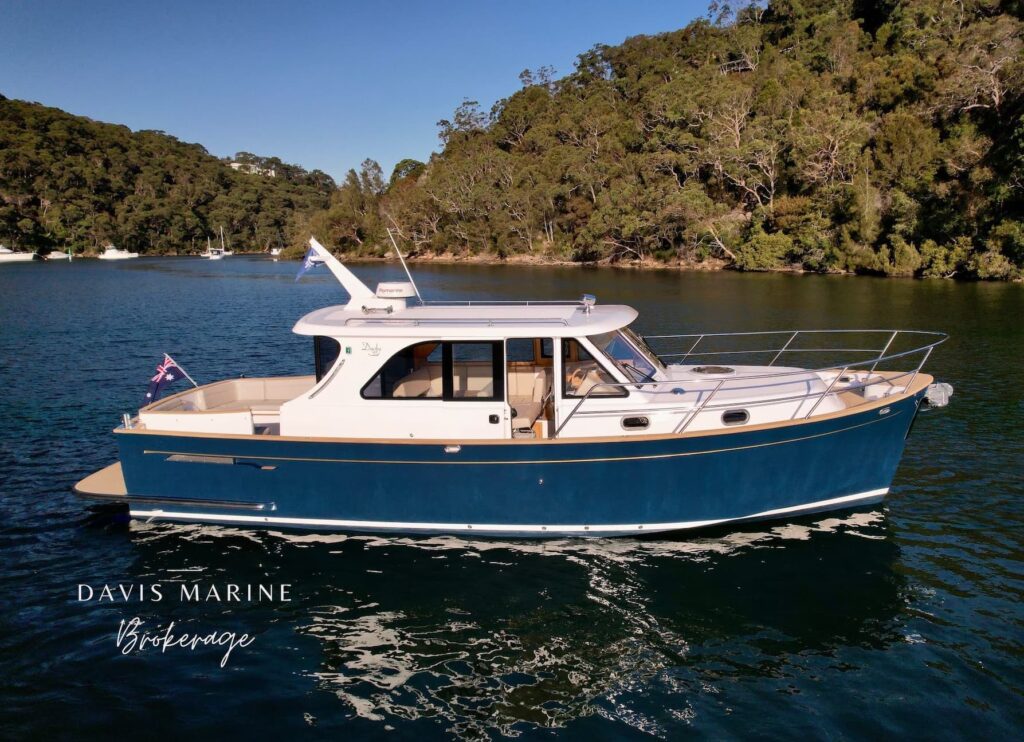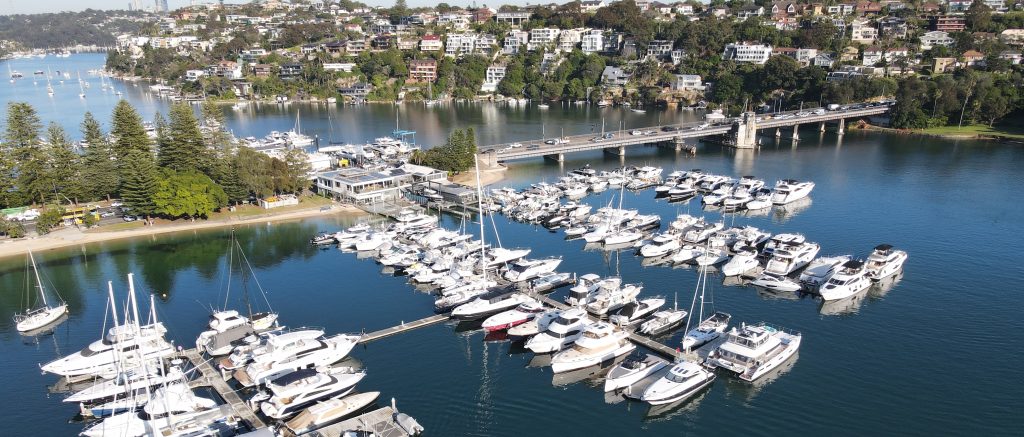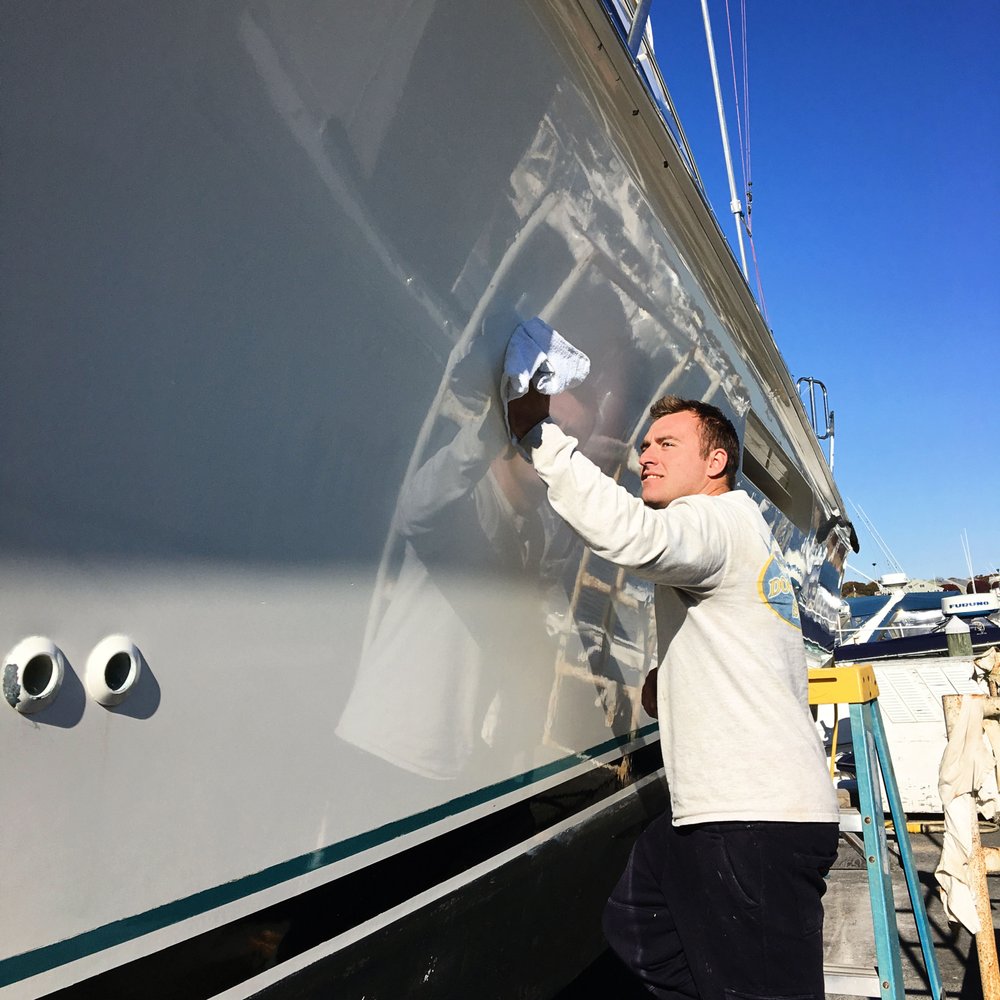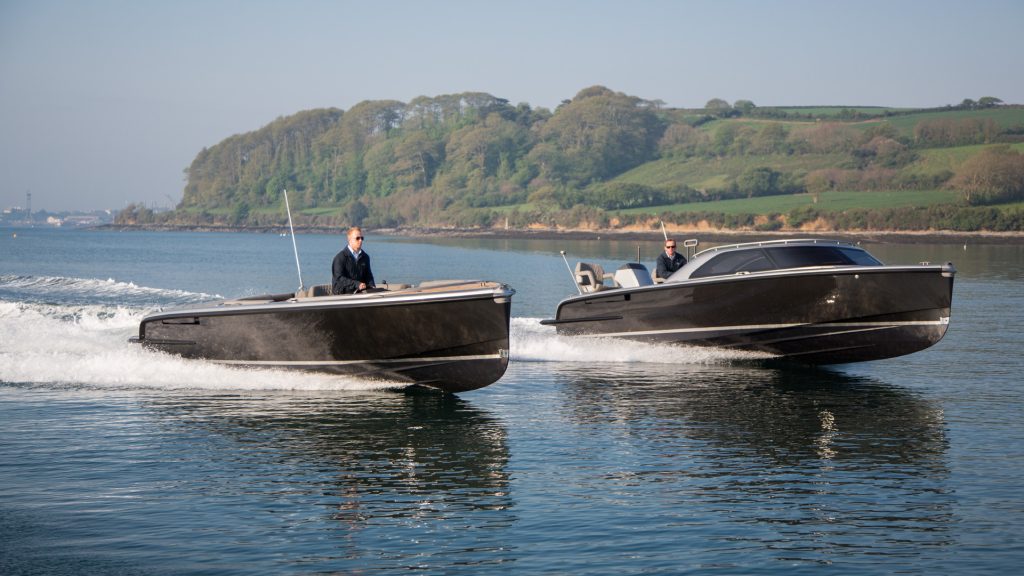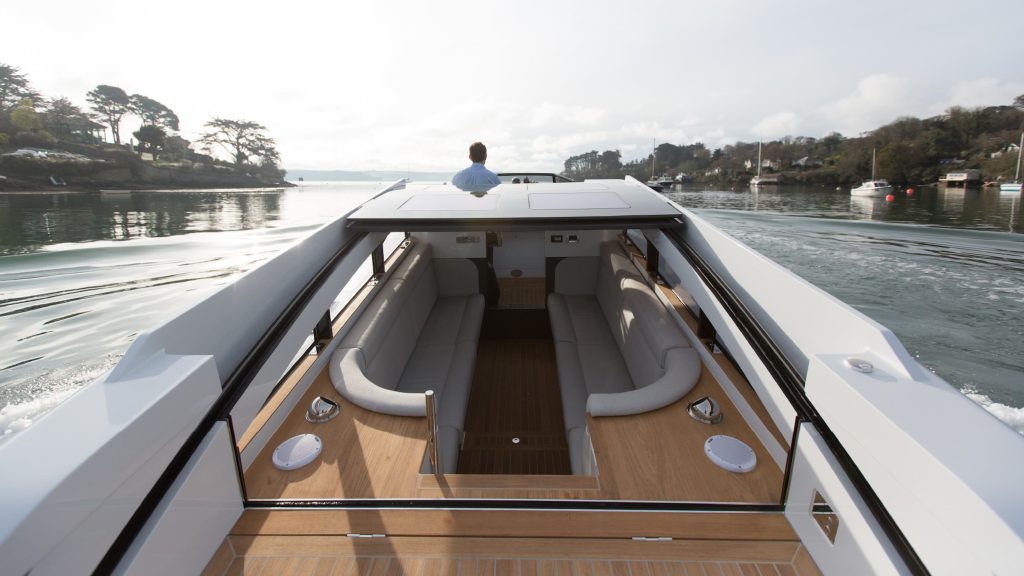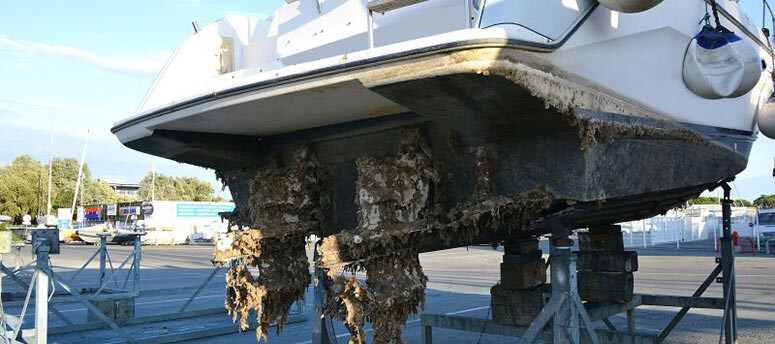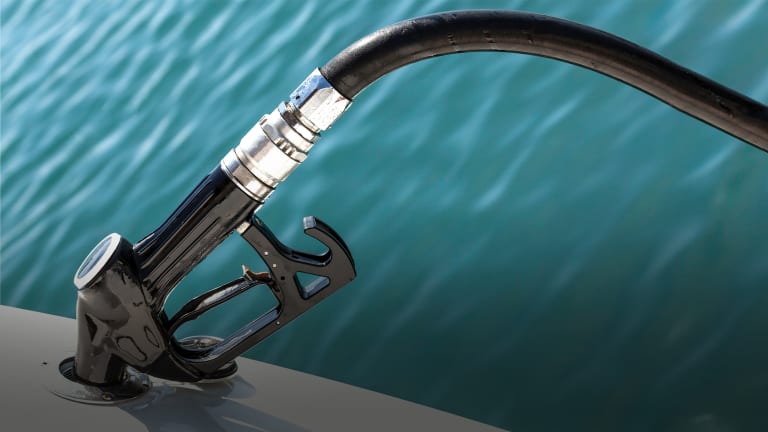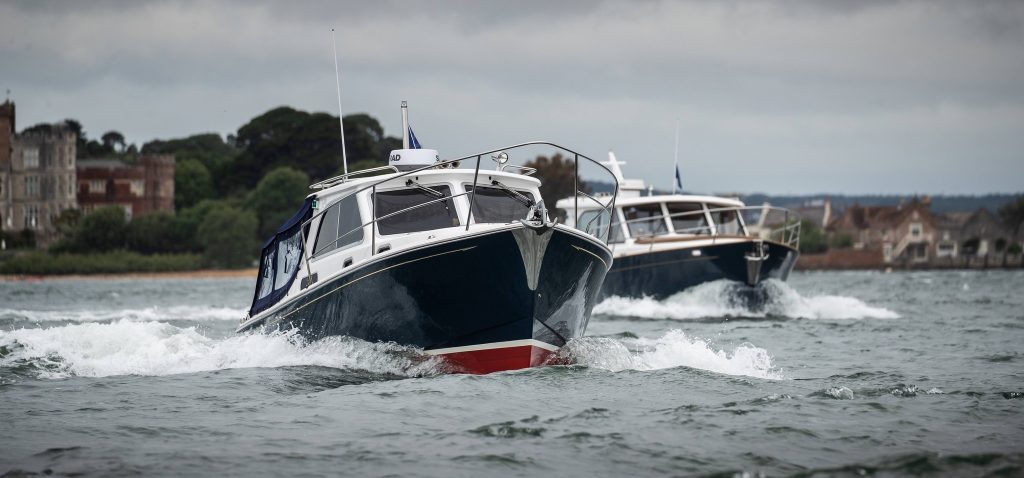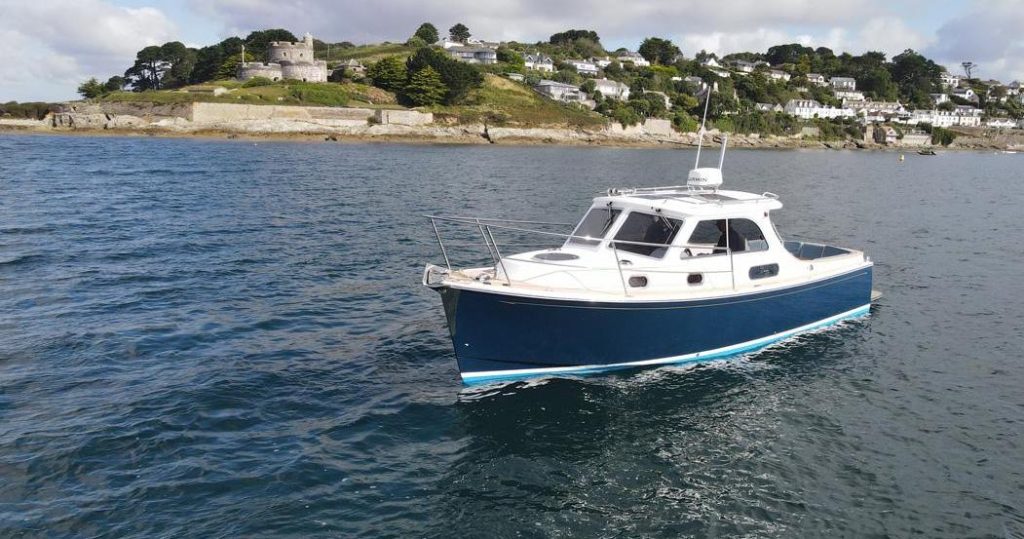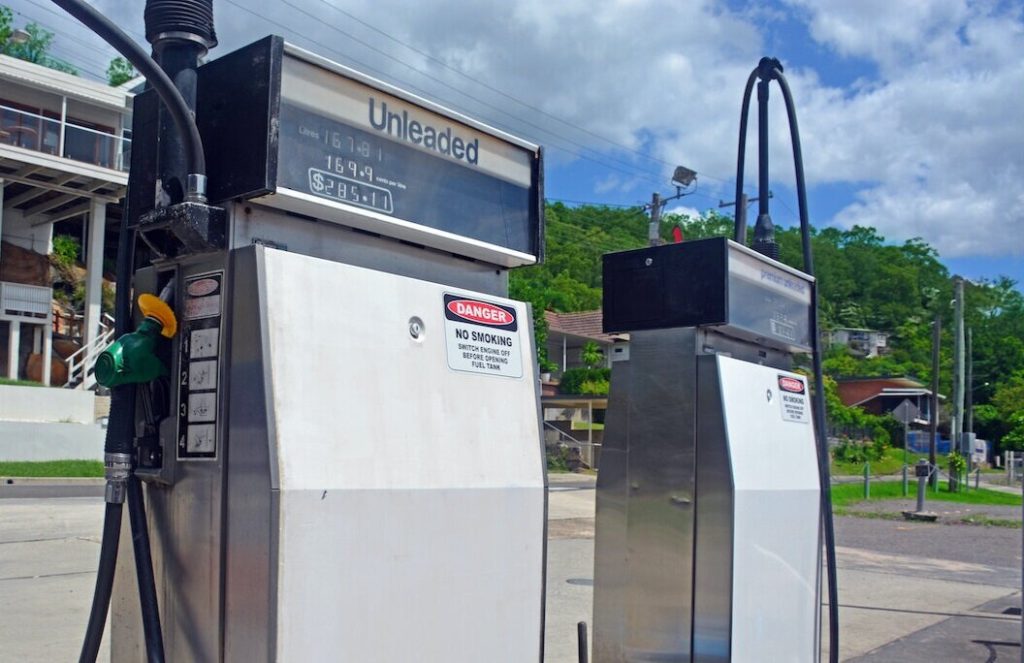Hi you sailors, I’m talking to you. What’s it like to operate a vessel of this hull type? How does she perform out in the ocean, in protected waters, and underway? Is it daunting to operate a vessel like this in a parking and anchoring scenario?
CREDITS: DAN JONES
AUDIO TRANSCRIPT
Guys, pricing is in the description below. Welcome to Camp Cove, right behind me, and we’re in Sydney Harbour, for those of you who don’t know. We’re going to be driving straight out to sea in a second, and we’re going to test the boat in all points that we find. So, we’re going to go up swell, across swell, and down swell. Following that, we’re going to go into some protected waters, and we’re going to see what the top speed of this boat is.
So, quite a nice spec on this particular Duchy. We have the extended-range fuel tank, that’s 1,100 litres, and we’ve got the big motors, the Yanmars. They’re 350 horsepower each, twin straight shaft, and they’re a V8. So, let’s just get the boat moving. I’ve got the fuel flow up at the moment, and I’m currently doing… Let’s just get it to six. Just want to get it to six knots. Okay, six knots SOG, got a fuel flow of around about three litres aside at six knots SOG.
“It has an extended-range 1,100-litre fuel tank. Twin Yanmar V8 engines, each with 350 horsepower, and straight shafts.”
For those of you that are coming from, and I think it’s going to be a few, but I’m going to make this point anyway, coming from a traditional planing powerboat, something like this with a full keel is going to feel very different.
You could almost describe it as a lot more ship-like. The reason being you have a lot more boat in the water rather than on, so we’re going to be cutting through the waves, and she’s going to provide more resistance in the turns, which essentially gives you a more comfortable ride. So just bear that in mind depending on where you are on your journey.
So, I’m just going to accelerate now. Coming from six knots, we’re going to get up to eight. Okay, got some traffic going to be coming around the corner soon. Climbing through seven, my revs are at 1500 revs. Let’s get up to 1600. Okay, nine knots at 12 litres aside, and then let’s increase. So, I’m just going to get moving. Okay, here’s an example right now. I’ve got some boat wash and I have a little bit of confused water. Just going through that at nine and a half knots. The boat really just wants to part a lot of those waves quite comfortably. It’s going to do half trim tab down, and I’m going to start accelerating. 2100 revs, 18 liners that’s aside, giving me 11.7 knots. Let’s go a bit faster. At those speeds, you probably want to do a little bit of bow down and basically part the waves a bit more with the cutting action at the front of the hull. But then, once you begin to accelerate, you can probably play with that trim and just see where she sits best.
Coming around the corner now, we’re going to see some exposed water in a second. I’m just going to stay clear of these rocks before I turn into it. So, I’m doing that at 15.5 knots, slightly variable because we’ve got some waves, and we’re going to go into these swells now. One meter plus and medium period. So in terms of the wave periods going, I’m at the peak and now I’m in the trough. Okay, let’s just get up to 17 knots. No water going over the bow, hopefully that’ll be visible on this camera and definitely visible on the drone. Here’s the big ones, up and over. Let’s give it a little bit more speed. I’m going to do full trim tab down just to see how that feels. I feel like you almost don’t need that much trim tab down, so I’m going to raise that now because I reckon that’ll put too much water up and over. So now I’ve got a little bit over half trim tab. This is comfortable. Many boats that you would see on my channel in waves like this, that one was probably two meters, we would be launching and then landing. And when you land with a true planing powerboat hull, you’re going to slam. That could be uncomfortable for your guests, could be uncomfortable for you, and it can send things bouncing around through the cabin. So, it’s not the best experience.
If you are a sailor, as I suspect many of you watching this are, or at least many of you who are interested in buying this boat, you’re probably going to be somewhat familiar with how the boat is behaving right now. So just pay attention to both camera angles and the drone because, depending on the style of yacht that you have sailed before, this is actually going to be quite similar in terms of the feeling and the sensation that you get.
Okay, I’m all clear. It’s quite the busy day today. There’s a naval exercise starting. Choppers going over me, and we had about seven Navy vessels from multiple different countries entering the harbour before, so it’s quite the spectacle, and we’ve got the US Navy just out here offshore right now.
So I’m going to take these waves on the beam, and I’m going to speed up. So the boat could clearly go faster through those waves but I’m the sort of person that would always suggest, if you’re going to enter a new wave zone, just slow down, feel the boat out. What’s the rush? Get comfortable before you increase speed because you’re just going to look after your passengers. This boat will be absolutely fine. You’re not going to be putting anyone at risk by going a little bit too fast through some swell. This is a proper offshore hull.
With the swells going up and down and the boat moving, I feel quite comfortable from the seated position. I’m going to show you guys, you taller blokes, what it’s like because you’re all writing to me. Here’s my visibility. Okay, that’s me sitting down at five-seven. Now I’m going to put the eye line one foot. So I’m putting that in line with my eyes above me. So if you’re six-seven, that’s what you see, and if you’re say, six foot or six-three, that’s what you see from a seated position just there. Okay, so I hope that’s useful.
Oh, whale! Okay, just seen a whale. I’m going to bear away and stay away from them. Okay, whale 200 meters to starboard, and I’m going to increase my speed. That’s at 16 knots, and now that I’m going down swell, I’m going to raise the trim tabs.
So 19 knots SOG, fuel flow between 33 to 36 litres aside. Boat feels like she’s really boogying at the moment. I could play with the trim moderately. Actually, I feel like she wants a bit more speed there. So I’m going to do that. I’m just going to increase that speed, and I’m going to stand up. So you do have a step which is the exit to your opening helm door on starboard. That’s actually quite comfortable to rest your right foot because what it does in a sea way like we are right now, it actually presses your buttocks up against this seat [helm seat]. And see how I can have very good throttle control with this hand [right hand] and wheel control with this hand [left hand]? So that feels good.
We are bouncing through a few moderately sized waves at the moment, and I’m just still maintaining that 22 to 23 knots speed with a rev setting of 2,800 revs. Clear all around, and I’m just hoping there’s not going to be any whales inside the harbour, but we didn’t see any evidence of that. Did you see any evidence of whales? Okay, definitely a humpback just before. So they generally hang out there. So let’s hope we don’t meet any more today. I have been a while before by accident. I apologise. We went to our separate ways, but I don’t want to do that again. It’s not really the intention when we get out here and go boating.
So just surfing waves at the moment, guys. These are between one to two meters, steep face at times. This is when you get the sensation of being in the water rather than on the water. You might climb up the back of a wave and drop off it, but there’s no jarring sensation that sends through your body like some boats that you’re going to see on my channel essentially would give you in conditions like this going down swell. So this is a real all-rounder style of hull that’s going to open up your area of operations. It’s going to widen your area of operations.
If you’re coming from a sailing boat and you’re used to going everywhere at six knots to eight knots, your ability to visit places and do things is much greater. Because looted, we’re in confused water, and we’re doing 21 and a half to 22 knots, burning between 30 to 40 litres aside, variable as we go up and down these waves. But if you look at that distance covered for fuel burn, it’s pretty good.
“This is a real all-rounder style of hull that’s going to widen your area of operations.”
Okay, we’re going to find some flat water in a second. I’ve got ferry just on the bow, and so I’m going to start to break right. So the steering is very direct, and the steering wheel does require a little bit of physical touch, put it that way, to operate the helm. But I think it’s what you would expect of a style of boat like this. So don’t try and do it. Don’t expect your kids to be able to steer this boat if they’re small and not particularly muscular because there is a little bit of effort required. But it does feel good, put it that way.
So I’m just paying attention to this ferry because I do want to open up the speed. What I might do is just pick a line, wait till we get to some flatter water. Okay, still at 22 knots, gonna start increasing my speed now. Okay, so here’s where the boat’s really starting to feel like she’s boogying at 25 knots. The bow’s settled down a little bit. I still have a little bit of trim, which I could reduce if I was in flat water, and I think I would. I’ve got one kayaker there, one ferry there, clear up ahead, and I’m just going to do a short burst speed so we don’t annoy anyone.
Increasing speed, 24 knots, reducing trim, not in flat water yet, guys. 27, 28. Wow, you really feel the acceleration and the pickup. I’ve reduced and completely retracted my trim. I’m going to have to slow down in a second. Thirty one and a half at 60 litres consumption. We’ll be entering a four-knot zone soon, so I’m going to have to come off the plane here, guys. And as soon as this ferry overtakes me, I’m going to break left and take you into a nice anchorage.
Alrighty, tell you what, having this style of hull, Sydney Harbour could get really, really busy on a Saturday or Sunday. So you have lots of traffic, and you could have lots of people to factor in, and they’re going to be making waves from every single direction. A hull like this will enable you to just put the boat on course, and it’s going to eat up a lot of that chop. So that’s quite a nice sensation, but it also allows you to reduce your workload because when you are faced with a very, very busy day, if you’ve got 20 boats ahead of you, and then you might have a yacht race, for example, with 150 boats in it, and you need to pick your lines, having to worry about how the boat’s going to behave going through the swell is just one less thing you have to do.So I think that’s just one of the things that this style of hull is going to bring to your boat life. So just bear that in mind.
We’re just going to cruise in here, and I’ll just cover off a couple more fuel flows on the way in, and then let’s do some manoeuvrability and bring you guys along with us. Still going into some swell here, so we’re not in protected waters. So 15 knots, 2,400 revs, 24 litres, 43 load. That’s cool, having the load. Bumping it up to 16-17. 28 litres.
So I think a lot of you probably are going to cruise around at that 16 to 17 because the boat’s quite happy at that speed. But should you want to go a little bit faster, 23 to 25 feels pretty good on this hull. And then we just saw 31 and a half just there. It is totally possible if you just need to get out of someone’s way.
“A hull like this will enable you to just put the boat on course, and it’s going to eat up a lot of that chop.”
But I don’t see you driving around all day at those sorts of speeds because it’s just not that sort of boat. Yes, you can do it, totally possible, but you can also load it up with a lot of weight, i.e., friends, and maintain a high, consistent speed, which is probably more important to many of you. Or if it’s not, let me know in the comments below. That’s what this is, YouTube, you can tell me whatever you reckon.
MANOEUVRABILITY
Okay, so let’s get in here. I’ll just do some manoeuvrability tests or demonstrations, and you guys can see what it’s all like. I’m going to go in here where it’s as protected as possible. So, full-keel boats or this almost has a full keel, provide more resistance when you’re doing transverse thrust. When I’m talking about transverse thrust, I mean one throttle into forward, the other in reverse. When you have a planing hull, there’s less boat in the water. So, there’s therefore there’s less resistance. With a hull of this style, it’s going to provide some resistance when you’re going around like this. So, you just need to make sure the boat can do it, and a boat with decent enough torquey propellers will, and all you need to do is get used to the fact that you might need to introduce a little bit of throttle first. So, I’m just going to come in slightly out of these waves. Get the boat moving. And then, once she’s moving, you can just down throttle through it a little bit. I’ll just do it here, even though we do have some waves. Okay, come to a stop. Alrighty. So, I’m just going to port.
So, I’ve just given it a little bit of power in reverse. And then I’m going to play. Notice that my other hand [left hand] is not involved in this process. I would suggest that good technique for you, if you drive like this, you might have a tendency to over-rev over everything because both hands are actually not going to put you to any great advantage. Because what we’re trying to do is throttle up, throttle down. It’s a mechanical device. It’s not a joystick. It’s not a video game. And if you’re here doing it too quickly, all you’re really going to do is stress the engines out. I don’t suggest that’s a very good thing to do. Hopefully that’s coming up on the camera or on the drone.
What the boat is doing again because we’ve got a lot of boat in the water rather than out of the water, even in a scenario where we have some waves coming from all directions, it feels incredibly steady right now. So that’s super comfortable, super predictable, the helm door is going to make life easy. But let’s just see what the bow thruster does because this should have to work a lot harder than say a planing hull.
So, it works. It’s got the power that’s going to help you in a pinch when you’re at the dock. But don’t rely on that. I would actually get the boat swinging with the throttles, put my main effort in with the motors, and then finish off the job with the bow thruster. I would err on the side of another second or two thrusting on a hull style like this. So, I normally tell people minimum two-second thrusts. I would do a four-second thrust on this, and that’s the solution.
SUMMARY
Well, guys, I hope that was beneficial. I hope you learned a thing or two about this beautiful Duchy 35, and she really is a beauty. This is the kind of boat that people are going to stop you and want to have a yarn about.
Who does this suit? I think it covers a broad spectrum of boaters because it really is a style of hull that is going to be happy in many conditions. So if you are an ex-sailor, you’re going to get a lot of benefit out of this, but many other boaters will too.
Who does it compete with? I think the Back Cove 372, that is a good piece of kit, and it’s bigger than this. So maybe it’s not a direct comparison, but I would put that up in the same level as what I’m seeing here. Other boats to consider would be the Palm Beach 42, much bigger, a lot more expensive. So you are a little bit limited in your choices for this style in this category, but maybe that’s what you’re looking for too because you are going to be appreciated by everyone who knows boats on Sydney Harbour if you’re cruising around in a boat like this.
So, guys, if you enjoyed that, I’ll leave some links to some competitors right now. Please subscribe, give the channel a like, and get on and support the Patreon. I do this for you, and I appreciate your support. It really does mean the world to me, and I’ll get back to all the comments that you’re leaving as soon as I can. Thanks very much, guys. Appreciate it. I’ll see you on the next one.
The Duchy 35 is just one of the many impressive models in the Duchy Motor Launches range. To see the full list, here’s a complete overview of the Duchy range. If you believe this is the type of boat you’re seeking, please don’t hesitate to give us a call. If you want to know more, check out the Part 1 and Part 2 reviews of the Duchy 35 by Dans Boat Life, as well as the walkthrough, and the article about the first Duchy 35 to arrive in Australia, sold by Davis Marine Brokerage, the exclusive distributor in Australia.
